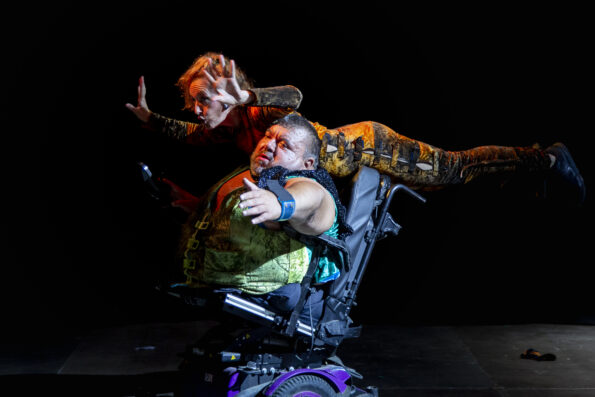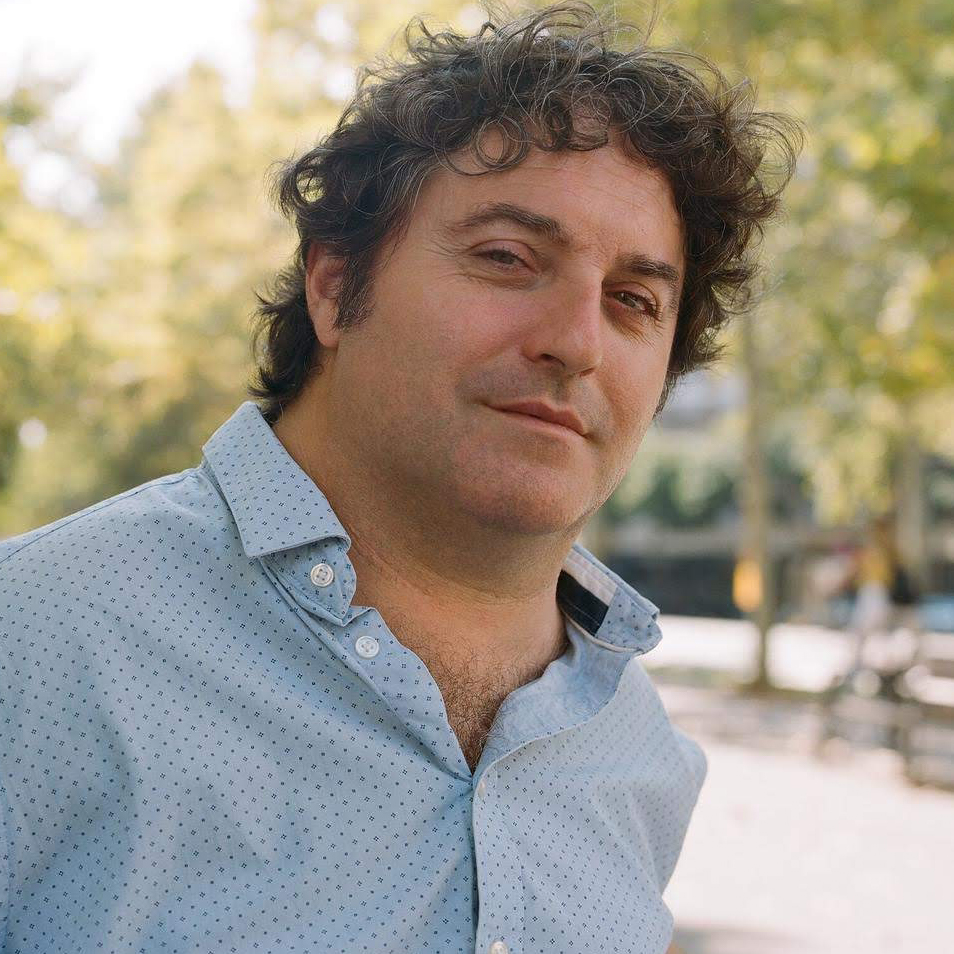Search
To search for an exact match, type the word or phrase you want in quotation marks.
A*DESK has been offering since 2002 contents about criticism and contemporary art. A*DESK has become consolidated thanks to all those who have believed in the project, all those who have followed us, debating, participating and collaborating. Many people have collaborated with A*DESK, and continue to do so. Their efforts, knowledge and belief in the project are what make it grow internationally. At A*DESK we have also generated work for over one hundred professionals in culture, from small collaborations with reviews and classes, to more prolonged and intense collaborations.
At A*DESK we believe in the need for free and universal access to culture and knowledge. We want to carry on being independent, remaining open to more ideas and opinions. If you believe in A*DESK, we need your backing to be able to continue. You can now participate in the project by supporting it. You can choose how much you want to contribute to the project.
You can decide how much you want to bring to the project.

Seeing is a mechanism, looking is an attitude. We open our eyes and the prodigious dance of light on our pupils automatically generates colors and shapes that make up an image of the world around us. We don’t decide that blood is red or that watermelons are spherical in shape, they just are. On the other hand, looking, far from being a biophysical algorithm, is constructed with an infinite number of intentions, interests, knowledge and desires articulated in a complex way. A good part of all that emotional cement belongs to the field of the subconscious, which is why looking is usually conditioned by memories, stereotypes and prejudices without us even realizing it.
I’ll share with you a small anecdote that illustrates the extent to which conditioning factors of our gaze distort what we see. When I was a child I had no neighbors or schoolmates of Asian origin, so comics —yes, I am prehistoric, there was no internet back then— had installed in my head the idea that “Chinese people were yellow.” Years later, when the first Chinese restaurant opened in town, I went with some friends and was surprised that the waiters, although they had slanted eyes, were not yellow. Instead of thinking “what nonsense they drew in the comics,” I told my friends that that restaurant was not authentic, that Chinese people really were yellow. Looking was imposed upon the simple act of seeing.
That is exactly what happens to people with functional diversity when we expose ourselves to the gaze of “normal people.” We are not in their daily life because they have taken it upon themselves to get us out of the way, generating a parallel universe (special school, special transportation, residence, home without support, etc.) that prevents us from knowing each other based on a shared life. Comics (art, culture, the media, etc.) continue to represent our reality, when they actually do, poorly. Basically, only suicidal cripples are ever shown (The Sea Inside, Million Dollar Baby), those who turn their lives into a medical treatment to be “cured” (Superman, “La Marató” of TV3) and those who “inspire” (Stephen Hawking, Paralympics) for the boring lives of “normal people.” There are other elements that reinforce this intrinsically negative symbolic universe about disability.
On the one hand, with laws such as euthanasia or abortion, disability is valued —implicitly, I don’t know if we’re educated or just hypocritical— as a personal characteristic that devalues the value of the lives of those of us who bear that label. Instead of universally legislating the right to terminate a pregnancy and to receive support to end one’s life, laws point an inquisitive finger at those lives of less value that justify authorizing abortion with a longer term than the rest of the population, or give support for suicides that are not given to truly valuable lives. To be clear, this is not an argument against abortion or euthanasia, quite the contrary, we demand free abortion and universal euthanasia. It is the legal texts that configure abortion and euthanasia as acts of eugenic that is discriminatory.
On the other hand, continuing with the elements that generate this violent collective imagination against functional diversity, we must talk about language. There is no thought without language (of whatever kind) and no language without thought. Perhaps it would be more illustrative to refer to thought-language. Today, words such as “disabled,” “people with a disability,” “invalid” or “dependent” continue to make up official and governmental language-thought, just as the use of “subnormal” or “disabled” used to be. All these terms focus our reality on “something bad that happens to our abilities.” Yes, something happens to the person, because as much as the mantra is repeated that “disability results from the interaction of deficiencies (here the argument is already going wrong) of a person with the social environment,” the reality is that no city, school or train has a “disability certificate,” it is still the people who “are the problem,” as shown by the “disability certificates” with names issued by multidisciplinary professional teams. Thus, the Independent Living Movement proposes “functional diversity” so that thinking does not revolve around the capacities of the individual but rather on the undeniable fact that all bodies are different, that they work differently, and that a minority suffers generalized discrimination for inhabiting the periphery of the Gaussian bell curve of these different functionalities. This is about situating the problem in the community management of that diversity, just as it is with sexual, cultural, religious, and other diversities. To go from “personal tragedy” to “community management of diversity” is not intended to be politically correct, but rather to situate the issue in the field of politics.
The Diversorium is a performing arts event in which artists and spectators embody diversities of all kinds, with a mutant soul and ubiquitous spirit, created with the intention of generating alliances and questioning segregation and the collective imagination of functional diversity. By sharing in the festive encounter, on both sides of the stage, the same joy or concerns that “normal people” believe to be exclusive to their privileged position will be exposed, with no possible escape, to the image in the mirror they never want to look at, that of human vulnerability, that of fragility. What justifies that some live free in their home and community and others cannot decide who they live with, who touches their bodies or what time they go to bed, if everyone needs other people? Or do you farm and hunt what you eat and go to the river for the water you drink? Make no mistake, we are not imprisoned for economic reasons either, experience shows that living in one’s own environment with personal assistance is cheaper and more economically efficient than locking ourselves up in institutions. We continue to be institutionalized out of inertia, carelessness and because they look at us expecting us to be yellow like Chinese people in comics, assuming that our vital needs and hopes are essentially different from those of those who lock us up. As for the collective imagination, there are few things as effective in changing the way people look at things as playful coexistence, enjoyment and artistic creation, on both sides of the stage. There it is possible to capture the person in all their dimensions, valuing human diversity beyond the productivist ideas that insist on considering people with differences as defective, disabled, thus avoiding community responsibility on how we organize ourselves so that all ways of being in the world find a space for the recognition of our dignity equal to that of anyone else.
When you make the decision to come and have a great time at one of the Diversorium parties, remember, vision is a biophysical automatism, but how we look at things is constructed and educated. Don’t settle for that impoverished automated look that tells you that a chicken is a defective eagle. You deserve to enjoy a multicolored world, rich in all kinds of diversities, more realistic and less prejudiced, a world that will be better if we manage to create a vision that values the dignity of the vulnerable and fragile above any materialist, productivist and reductionist inertia of what it means to be human. Long live diversity!
[Featured mage: Vaciarte, Diversorium-Festival BAM 2022, Barcelona. Photo by Eva Carasol. Images from Diversorium, Costume design Osias Yanov, Festival BAM 2022, Barcelona. Photos by Eva Carasol]

Antonio Centeno Ortiz, (1971, Montcada i Reixac) acquired his functional diversity (tetraplegia) at the age of 13. He holds a degree in Mathematics from the University of Barcelona and worked as a mathematics teacher in secondary education from 1998 to 2010. He currently teaches in the master’s degree “Gènere i comunicació” (UAB), is part of the Colectivo Ficcial, which offers advice on the cultural representation of differences, and collaborates in the inclusive art project Diversorium.
He has promoted different audiovisual initiatives linked to functional diversity: the TV series “Trèvols de 4 fulles” (2018) as co-writer and actor, the film “Vivir i altres ficcions” (2016) as actor, and the documentary “Yes, we fuck” (2015) as co-director.
He is a member of the Foro de Vida Independiente y Divertad (FVID) [Forum for Independent Living and Fun] since 2004, one of the founding activists of the Oficina de Vida Independiente de Barcelona [Independent Living Office of Barcelona] who was part of the working group that developed the Municipal Personal Assistance Service. He is also responsible for the asistenciasexual.org project.
https://antoniocenteno.barcelona/
"A desk is a dangerous place from which to watch the world" (John Le Carré)